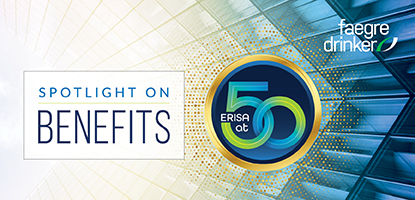The SECURE 2.0 Act made it easier for retirement plan sponsors to correct automatic enrollment errors. As a policy matter, Congress strongly supports automatic enrollment provisions in retirement plans, and making it easier to correct errors should (hopefully) encourage retirement plan sponsors to add such features to their plans. This post focuses on the automatic enrollment correction provisions of the SECURE 2.0 Act. (For an overview of the SECURE 2.0 Act for defined contribution plan sponsors, click here.)
Correcting Automatic Enrollment Errors
Section 350 of the SECURE 2.0 Act codified a safe harbor correction for automatic enrollment errors into the Internal Revenue Code. Prior to the SECURE 2.0 Act, automatic enrollment errors were eligible for correction under EPCRS (Employee Plans Compliance Resolution System) but were often subject to a sunset provision by the IRS (although that sunset provision had been extended previously).
The Code now allows for corrections of automatic enrollment errors if a plan sponsor:
- Timely corrects (discussed below).
- Implements the automatic enrollment feature going forward.
- Provides the employer match, if any, the employee would have received had the automatic enrollment been implemented correctly (with such amount deposited within six months of when the correct deferrals begin).
- Adjusts the employer match for investment earnings.
- Identifies any similarly situated employees that need to be corrected.; and
- Provides notice to the employee of the correction within 45 days of correct deferrals beginning that complies with the SECURE 2.0 Act’s requirements and any IRS guidance.
Timely correction depends on whether the automatic enrollment error is brought to the retirement plan’s attention by the employee or by the plan sponsor (or its vendors).
- If the employee discovers the error and notifies the retirement plan, then the plan sponsor has until the first pay date after the last day of the month following the month of notice to timely correct the error.
- For example, if an employee notifies the plan of an error any time in November, the correction must be implemented by the first pay date in January.
- If the plan sponsor (or its vendors) discovers the error, then the error must be corrected no later than the first pay date after October 15 of the year after the error.
- For an automatic enrollment error in 2024, the correction needs to be implemented by the first pay date after October 15, 2025.
Importantly, there is no obligation on the plan sponsor to correct for missed automatic enrollment deferrals (that were instead paid to the participant). The only plan sponsor costs are with respect to the matching contribution that would have been made had the automatic enrollment error not occurred.
The SECURE 2.0 Act’s automatic enrollment correction guidance is generally effective for any errors that occurred in 2023 or later.
If you have any questions, please reach out to your Faegre Drinker benefits counsel.
The material contained in this communication is informational, general in nature and does not constitute legal advice. The material contained in this communication should not be relied upon or used without consulting a lawyer to consider your specific circumstances. This communication was published on the date specified and may not include any changes in the topics, laws, rules or regulations covered. Receipt of this communication does not establish an attorney-client relationship. In some jurisdictions, this communication may be considered attorney advertising.

